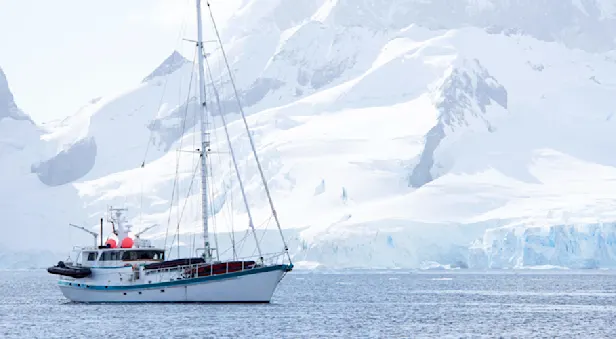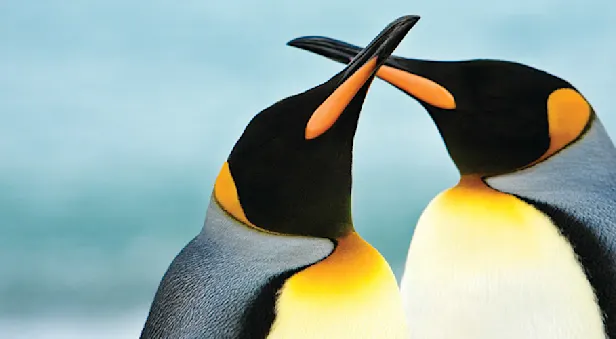Southern Elephant Seal Facts | Antarctica Wildlife Guide
Southern elephant seals are circumpolar in their range, found on the coasts of most sub-Antarctic islands and in Antarctica itself. These massive creatures are the largest of seals, exceeding even the walrus’s size. Males grow to an immense 20 feet in length and weigh up to 4 tons. Females are smaller than their male counterparts, reaching 12 feet in length and weighing approximately 1 ton. Males have dark gray coats and a trunklike, inflated proboscis, while females lack this snout and are brown in color.
Elephant seal males maintain and defend breeding territories and harems (like the fur seals). They start coming ashore in August to establish their territories in anticipation of the arrival of the females a few weeks later. Each bull may guard a harem of up to 50 females, though other males often challenge him.
The precocious pups, which may be 4 feet in length and weigh 80 pounds (36 kilograms), are born about one week after the females arrive. Mothers nurse their pups for three to four weeks, and the young rapidly gain up to 20 pounds each day. During the mating season, elephant seal pups have a mortality rate of 25 percent. They are at risk of becoming crushed by enormous, fierce males, as they move about defending their territory.
After the pups are weaned, their parents leave them, as they head out to see to feed. Then the gregarious adults return to the beaches to gather in large, muddy wallows for a month or more while they molt. A tightly packed elephant seal wallow is an extraordinary sight—and smell.
Elephant seals do not truly migrate because when they leave the breeding grounds and go to sea, they mainly move ahead of the advancing ice pack. They feed mostly on squid supplemented by fish, which they catch in deep dives to about 3,300 feet.
After the fur seals had been nearly exterminated by the 1820s, the sealers turned their attention to the elephant seals, which were killed for their oily blubber. A large male yielded nearly 100 gallons of high-quality oil. The pattern of overexploitation was repeated, and by the mid-19th century so few elephant seals remained that the industry came to an end.
Their numbers recovered, and in 1910 elephant seals were again being killed on South Georgia. Conservation regulations were enacted, and the industry was sustainable until it ended in 1965. Happily, populations have recovered very well, and the elephant seal is once again common in many parts of its original range.
See Southern Elephant Seals on These Antarctic Expeditions

Sailing Antarctica: A Polar Wildlife Expedition
Those with a passion for true adventure won't find a more exhilarating thrill than exploring Antarctica on an intimate voyage by private motorsailer—for just seven guests! Kayak and camp on the ice, too.


Antarctica, South Georgia & the Falklands
A comprehensive voyage to the wildlife-rich Falkland Islands and historic South Georgia, where a million-plus king penguins reign—plus the wonders of the Antarctic Peninsula!


































